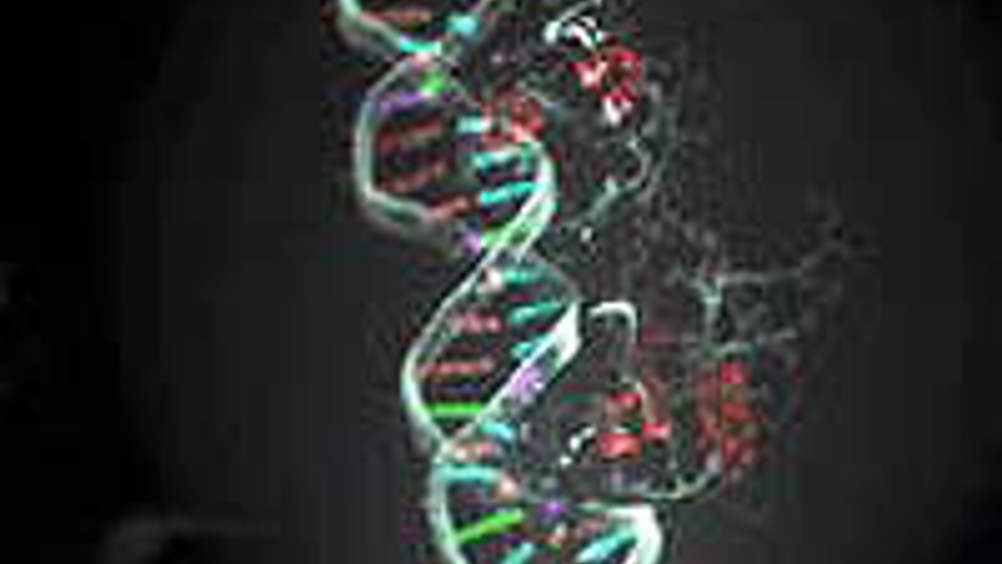DNA coats help control particles

Researchers at the US Department of Energy’s Brookhaven National Laboratory have developed a new way of controlling the self-assembly of nanometre and micrometer-sized particles.
The method, for which a patent application has been filed, is based on designed DNA shells that coat a particle’s surface. It can be used to manipulate the structure, and therefore the properties and potential uses, of materials.
‘Our method is unique because we attached two types of DNA with different functions to particle’s surfaces,’ said Oleg Gang, who leads the team. ‘The first type - complimentary single strands of DNA - forms a double helix. The second type is non-complementary, neutral DNA, which provides a repulsive force.’
This method gives greater control allowing for fine-tuning of materials at molecular level and has potential applications in industry such as efficient energy conversion and cell-targeted systems for drug delivery.
‘The DNA acts as a molecular spring,’ said Matthew Maye, another researcher on the project. ‘This results in the repulsive force among particles, which we can regulate. This force allows is to more easily manipulate particles into different formations.’
Register now to continue reading
Thanks for visiting The Engineer. You’ve now reached your monthly limit of news stories. Register for free to unlock unlimited access to all of our news coverage, as well as premium content including opinion, in-depth features and special reports.
Benefits of registering
-
In-depth insights and coverage of key emerging trends
-
Unrestricted access to special reports throughout the year
-
Daily technology news delivered straight to your inbox










Water Sector Talent Exodus Could Cripple The Sector
Maybe if things are essential for the running of a country and we want to pay a fair price we should be running these utilities on a not for profit...